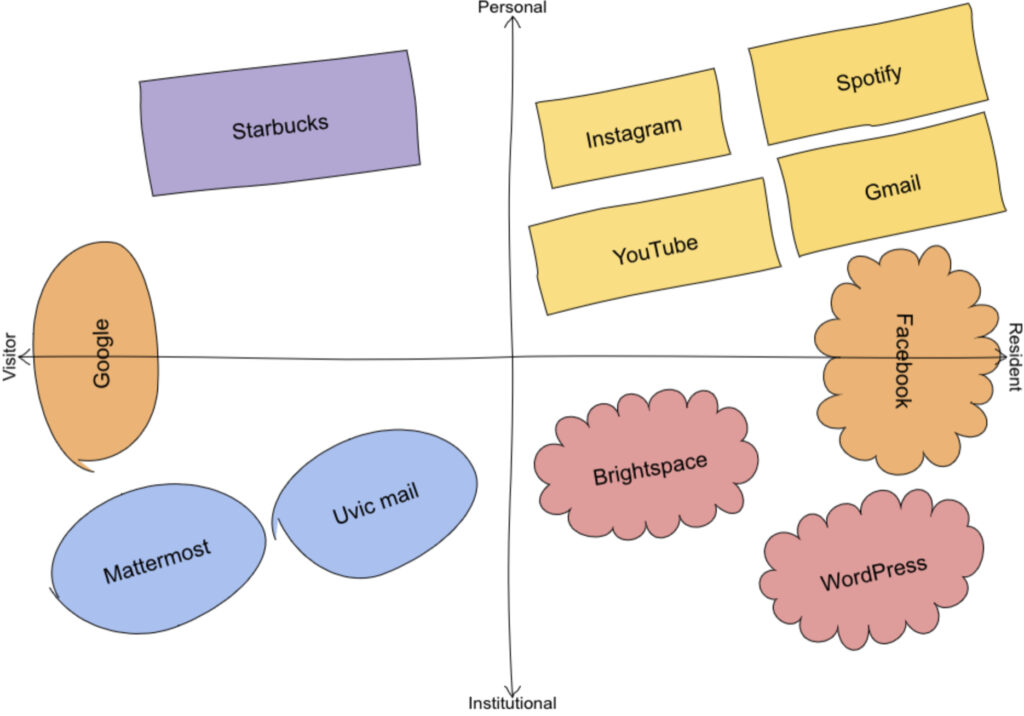
This is my V+R map, and obviously I use social media the most for personal reasons, because it is the fastest way for me to learn about the world and make friends. I also use Facebook to communicate with my classmates or colleagues in a timely manner. Brightspace and WordPress are currently the most used web pages when I am in school, so this is where I put them in institution. I think Chrome is not only for my personal search needs, but also for work.
What digital platforms are students currently using to develop their professional network?
With the rapid development of the Internet, students can have many digital platforms to show their profession, the most popular ones are Facebook, Twitter or Reddit, Linkedin and so on. These platforms are also a way for students, professors or employers to keep abreast of their basic information. But I found that Tiktok and Instagram have become a new trend that many young people are addicted to. Short video and photo collections can give the audience the most direct and quick understanding of what the publisher wants to express. Therefore, when students want to convey some of their professional content, they will choose to publish on these two platforms. This is a positive trend I see in the current Internet development platform, where people can easily build their own brands or social activities and make money from these activities. Save time and money, and bring more possibilities and surprises to many products.
What could the student consider in expanding their professional learning network?
The common feature of the large social software I have listed above is that people can find their industry or the content they are interested in from the tag. The advantage of this way is to keep abreast of the latest industry information and improve my professional ability from the experience of others. In addition to picking up information on other people’s social media platforms, we also give others the opportunity to learn about us when we speak on those platforms. What we should do to expand our PLN is to update our relevant posts in time, so that not only professors or employers can see our abilities, but also classmates and friends can find similar attitudes and expand our social space.
In your network how can you create a digital identity/reputation?
The upside of the big data era is that it is broad and fast, but the downside is that there is nowhere for many people to hide their information. We create digital identities from our posts, comments, likes and views. The rapid change of the Internet can cause many of us to lose ourselves temporarily, but the traces left by our digital identities are not so easily erased. So the best way to preserve our digital reputation is to be careful with what you say and what you do, taking a moment to reflect on every post and comment.
Find out what a local employer would do if you applied for a job with them?
As an employer, they certainly would not be completely blinded by a resume. Background check is the most basic way for a company to investigate the employees, not only to know the potential of the employees, but also to look at the past life and work experience of the employees. For example, if you had an unhappy relationship with your former company, or if the life behind them was positive. Our social media activities are a direct reflection of our attitude towards life, so the content we post on the platform needs to be careful.
Recent Comments